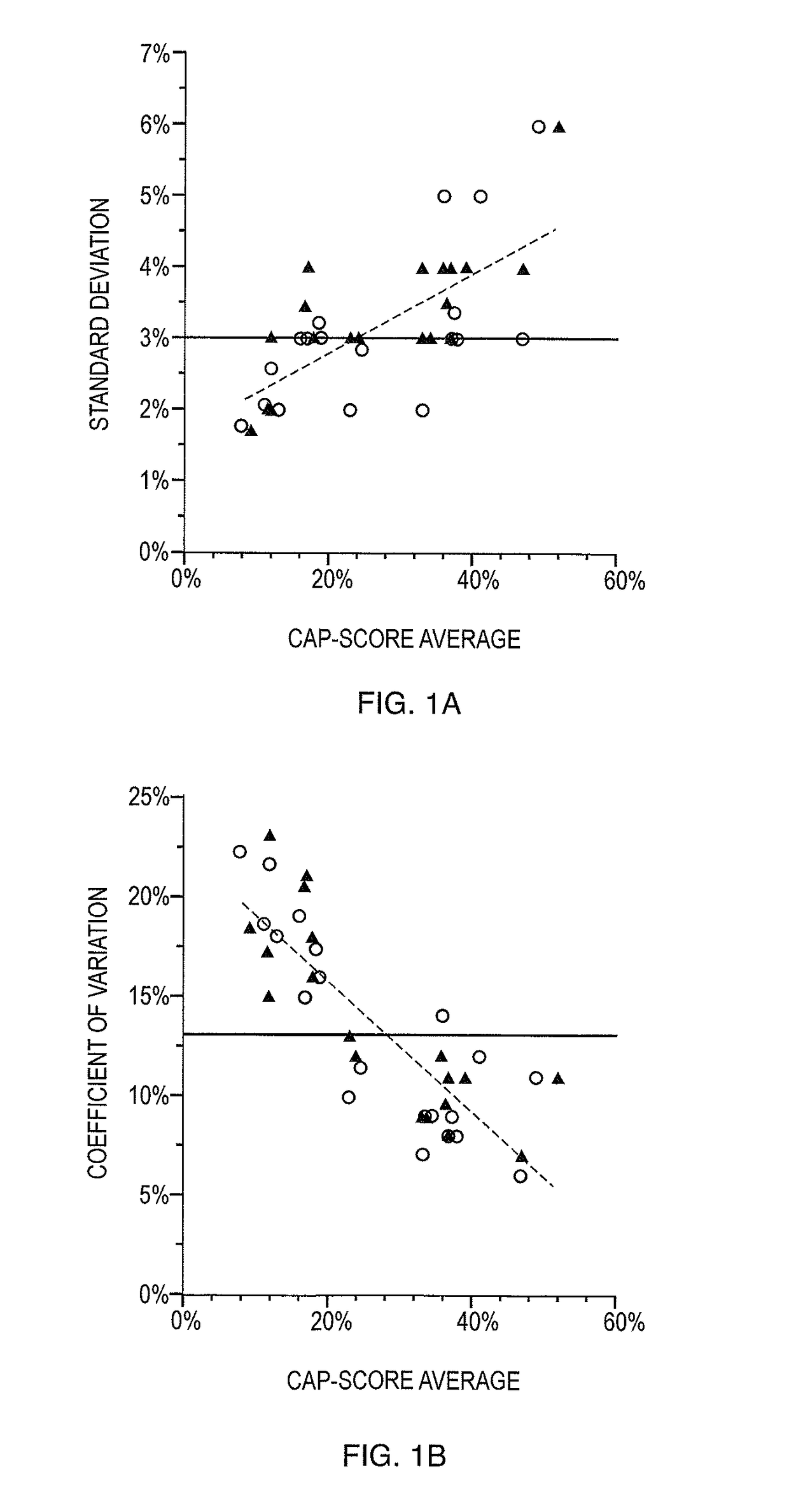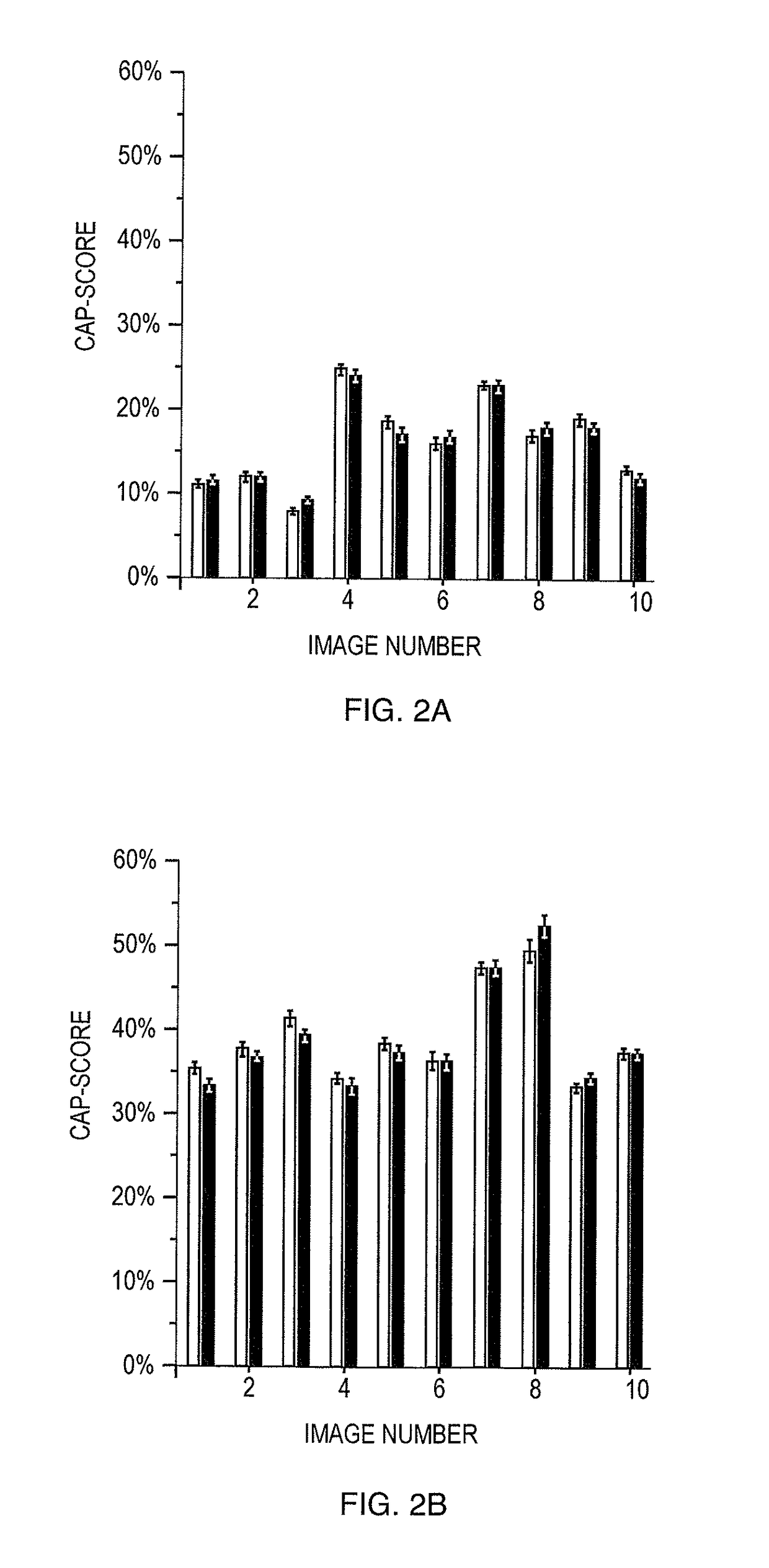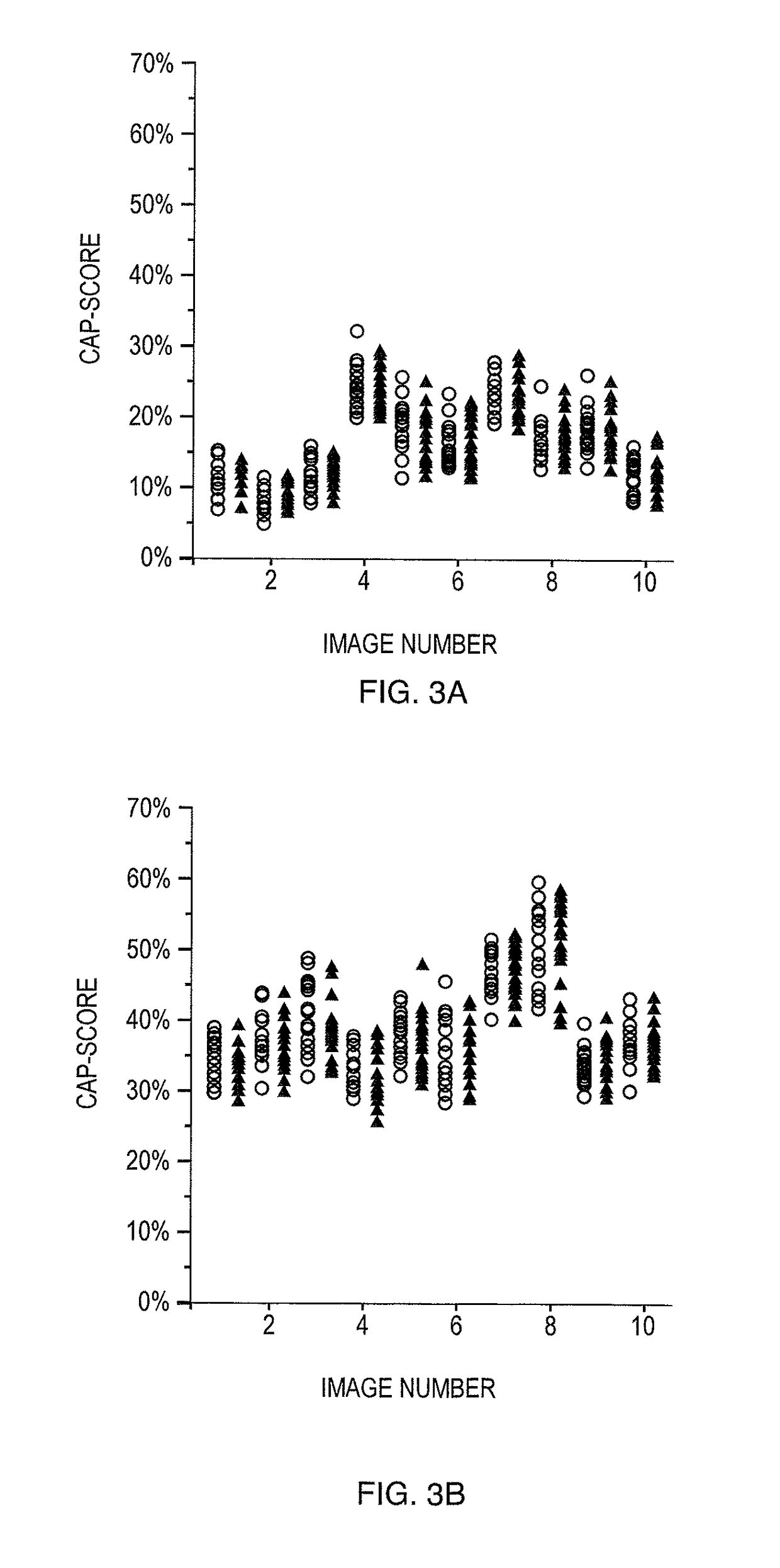Method to identify an approach for achieving mammalian fertilization and time period for insemination
a technology of insemination time and method, applied in the field of male fertility, can solve the problems of inability to assess the fertilization potential of sperm morphology, motility and concentration, and the inability to measure the morphology of sperm, and achieve the effect of fertilization incompetence, negative affecting sperm viability and function, and inability to achieve sperm
- Summary
- Abstract
- Description
- Claims
- Application Information
AI Technical Summary
Benefits of technology
Problems solved by technology
Method used
Image
Examples
example 1
Sperm Handling Methods
[0115]Three common methods to reduce viscosity were evaluated. Ejaculates were: 1) Incubated for 0.25, 1.25 or 2 hours, 2) diluted 1:1 with Modified Human Tubal Fluid (Irvine Scientific; Santa Anna, Calif.) and then passed through a wide orifice transfer pipette (“WOTP”) or a Pasteur pipette (“PP”), 3) Enzymatically digested with chymotrypsin (“chymo”). Pilot studies revealed that passage through a hypodermic needle negatively affected motility and membrane integrity and was not studied further. After liquefaction, samples were washed and incubated under capacitating (CAP) and non-capacitating (NC) conditions. Cap-Score values were obtained via fluorescence microscopy according to the calculation described above.
Reliability and Reproducibility of Cap-Score™
[0116]Following liquefaction of semen samples from consenting men, sperm were washed, incubated, fixed and then evaluated via fluorescence microscopy for GM1 localization patterns. Precision of scoring within...
example 2
[0124]This example was conducted using a cohort comparison between fertile (cohort 1, pregnant or recent father) and potential subfertile / infertile men (cohort 2, men questioning fertility). Relationships between Cap-Score and traditional semen measures were also explored.
[0125]All studies approved by WIRB (20152233). Semen samples were liquefied, washed, and incubated under non-capacitating and capacitating conditions. Sperm were fixed overnight and Cap-Score determined via fluorescence microscopy. Semen quality measures were evaluated according to WHO. T-Test, ANOVA and correlation analyses were done using Microsoft Excel (2013) and XLSTAT.
[0126]The mean Cap-Score for cohort 1 was 35.3 (SD=7.7%; n=76 donors; 187 collections). Cap-Scores were lower for cohort 2 (p=1.0E-03), with 33.6% (41 / 122) having Cap-Scores below one (1) SD below the mean for cohort 1, versus an expected 16%. For cohort 2, no relationship was observed between Cap-Score and morphology (p=0.28), motility (p=0.14)...
example 3
[0130]The procedures used in Examples 1 and 2 were used in Example 3.
[0131]Classic semen analyses provide little information on the ability of samples to fertilize and egg. Capacitation is required for fertilization and can be assessed using GM1 localization. A comparison of the Cap-Score values from two cohorts of men revealed significant differences in their ability to capacitate. A robust capacitation profile can be defined and employed for identifying abnormalities. Remarkably, 33% of men questioning their fertility had z-scores≦−1, versus an expected result of 16%. Combining the Cap-Score™ Test with traditional analyses should prove valuable in diagnosing male infertility.
[0132]Samples from 122 men referred to an infertility specialist were analyzed and had Cap-Scores ranging from 13 to 52%. An analysis of variance was done to compare Cap-Score values and sperm morphology. Samples were classified as having 0, 1, 2, 3, or ≧4% normal forms (scores≧4% are considered normal, WHO) a...
PUM
 Login to View More
Login to View More Abstract
Description
Claims
Application Information
 Login to View More
Login to View More - R&D
- Intellectual Property
- Life Sciences
- Materials
- Tech Scout
- Unparalleled Data Quality
- Higher Quality Content
- 60% Fewer Hallucinations
Browse by: Latest US Patents, China's latest patents, Technical Efficacy Thesaurus, Application Domain, Technology Topic, Popular Technical Reports.
© 2025 PatSnap. All rights reserved.Legal|Privacy policy|Modern Slavery Act Transparency Statement|Sitemap|About US| Contact US: help@patsnap.com



